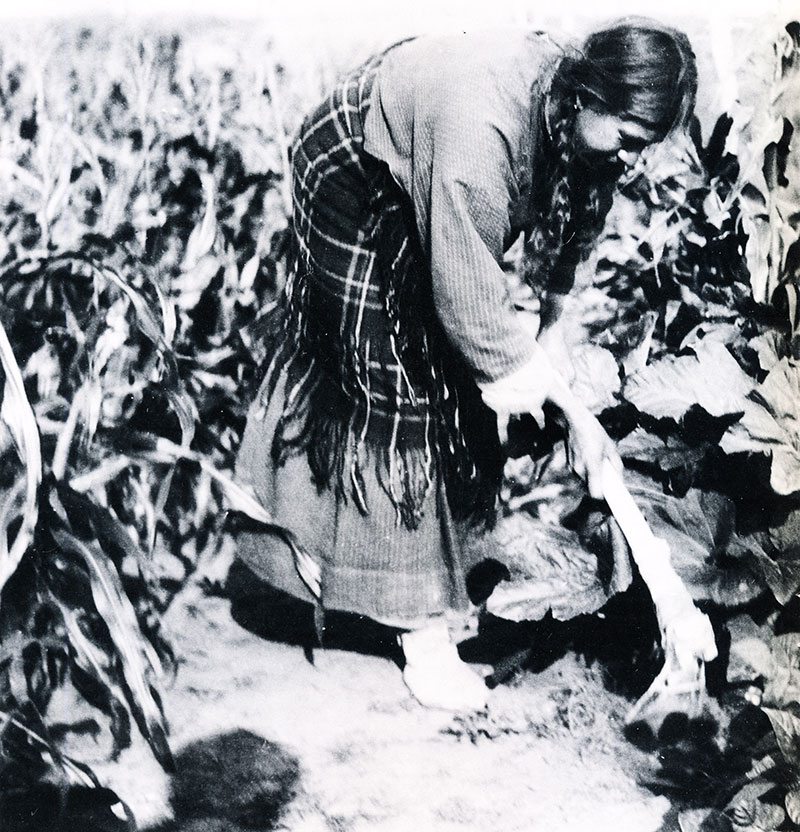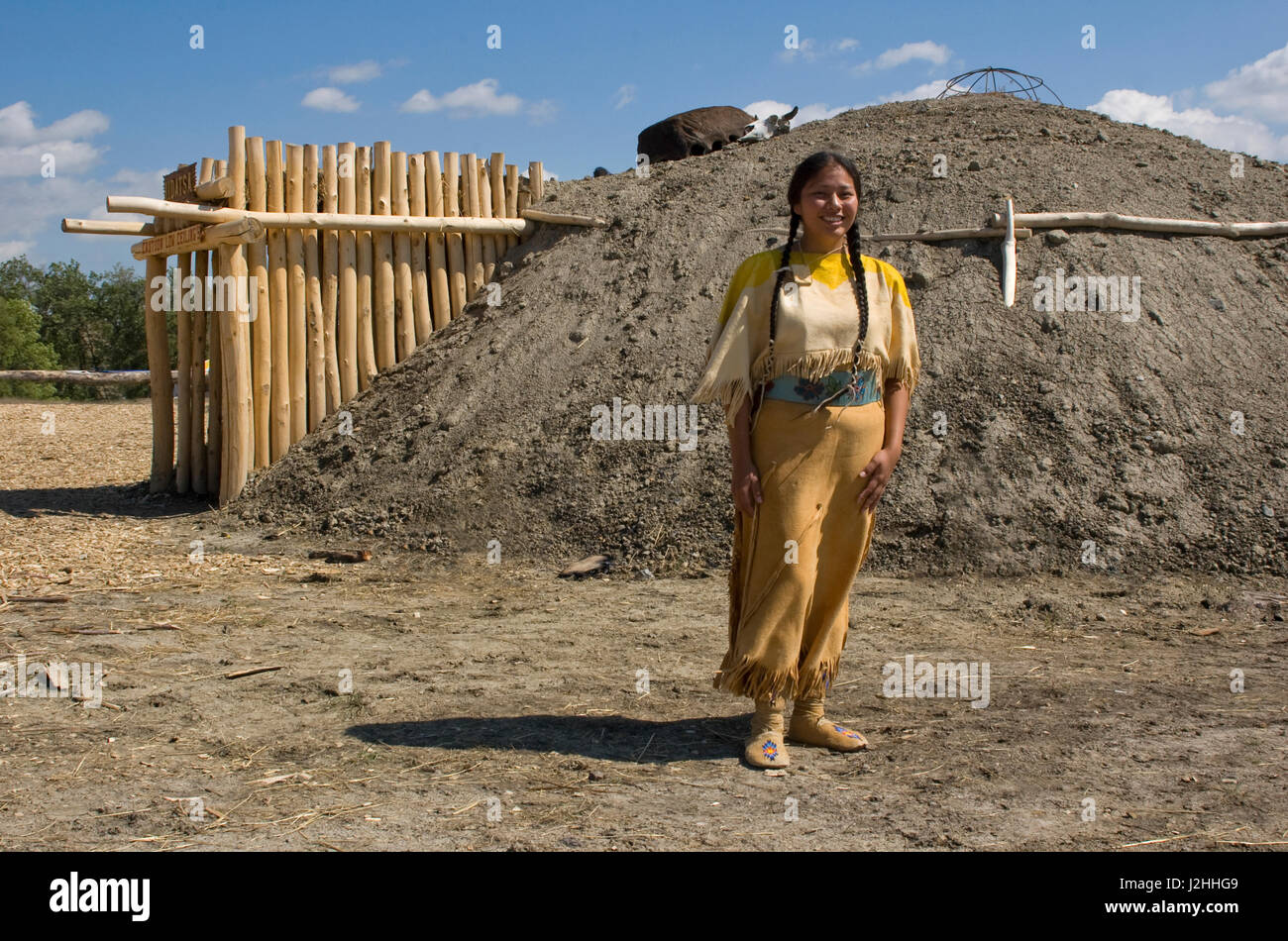
Stewards of the Earth: The Enduring Agricultural Legacy of the Hidatsa in the Upper Missouri River Valley
In the vast, undulating landscapes of the Upper Missouri River Valley, where the sky stretches endlessly and the river carves its ancient path, a civilization flourished for centuries, not on the spoils of conquest, but on the bounty of the earth. The Hidatsa, a Siouan-speaking people, stand as a testament to human ingenuity and resilience, having cultivated a sophisticated agricultural tradition that not only sustained them but also shaped their culture, economy, and spiritual world. Far from being mere hunter-gatherers, the Hidatsa were master farmers, transforming the rich river bottomlands into verdant fields that provided the bedrock of their settled existence.
Their story is one of profound connection to the land, an intricate dance with the seasons, and a deep understanding of ecological principles that predated modern science. For generations, the Hidatsa, often in close alliance with their Mandan and Arikara neighbors – collectively known today as the Three Affiliated Tribes (Mandan, Hidatsa, and Arikara Nation) – built permanent earthlodge villages, strategically positioned on bluffs overlooking the fertile river terraces. These villages were not temporary encampments but thriving agricultural hubs, the heartbeat of a complex society whose very rhythm was dictated by the planting, tending, and harvesting of their sacred crops.
At the core of Hidatsa agriculture were the "Three Sisters": corn (maize), beans, and squash. This polycultural system, a marvel of indigenous agricultural science, provided nutritional completeness and ecological synergy. Corn, the elder sister, offered a stalk for the beans to climb, lifting them towards the sun. The beans, in turn, fixed nitrogen in the soil, enriching it for the demanding corn. Squash, the third sister, spread its broad leaves across the ground, shading the soil to retain moisture and suppress weeds, while its prickly vines deterred pests. This symbiotic relationship ensured optimal yields and sustained soil fertility, a sustainable practice that has inspired contemporary permaculture.
The Hidatsa cultivated numerous varieties of each sister. Their corn, remarkably diverse, ranged from flint corn for grinding into flour and hominy to sweet corn for roasting. Beans came in a spectrum of colors and sizes, providing vital protein, while squash varieties included pumpkins, hard-shelled winter squash for storage, and summer squash for immediate consumption. Beyond the Three Sisters, sunflowers were grown for their oily seeds, a rich source of fat, and tobacco held profound ceremonial significance, meticulously cultivated for ritual use. Wild plants, too, were integrated into their diet, with women foraging for plums, cherries, chokecherries, and various roots and berries, complementing the cultivated produce.
The agricultural calendar dictated much of Hidatsa life. Spring brought the arduous task of preparing the fields. Women, who were the primary farmers and held significant authority in this matrilineal society, used specialized tools. Early hoes were crafted from the shoulder blades of bison or elk, hafted to sturdy wooden handles, while digging sticks aided in planting. The fertile river bottomlands, enriched by annual flooding, required minimal fertilization, but the Hidatsa were known to add wood ash and even the occasional fish to the soil to boost fertility. Planting was a communal effort, often accompanied by songs and ceremonies to ensure a bountiful harvest.

Summer was a period of constant vigilance – weeding, tending, and protecting the crops from pests and the unpredictable elements. The Hidatsa faced the harsh realities of the Upper Missouri climate: scorching summers, devastating hailstorms, and periods of drought. Their agricultural knowledge included sophisticated methods for water management, utilizing natural depressions and understanding the river’s ebb and flow to maximize moisture retention in their fields.
The late summer and early fall brought the joyous, yet labor-intensive, harvest. Once gathered, the crops were processed and stored with meticulous care. Corn was dried on scaffolds, husked, and then stored in underground caches, bell-shaped pits lined with grass and earth, where the cool, dry conditions preserved the grain for years. Beans and squash were also dried, often braided or cut into strips, ensuring a steady food supply through the long, harsh winters. These substantial food reserves were a cornerstone of Hidatsa survival, providing not only sustenance but also a valuable commodity for trade.
Indeed, Hidatsa agricultural surpluses fueled a vibrant regional trade network. Their villages, strategically located at the confluence of major waterways and trails, became bustling centers of commerce. Nomadic tribes from the plains, such as the Crow and Cheyenne, would journey to the Hidatsa villages, exchanging bison hides, meat, and horses for the Hidatsa’s highly prized corn, beans, and squash. This economic interdependence fostered both alliances and occasional conflicts, but the Hidatsa’s role as agricultural providers gave them considerable influence and stability in the region. Lewis and Clark, during their expedition in 1804-1806, noted the impressive productivity and trade activity of the Hidatsa and Mandan villages, marveling at the abundance of their cultivated fields. Meriwether Lewis described their fields as "extensive" and their stores as "ample," a testament to their agricultural prowess.
Beyond mere sustenance, agriculture was deeply interwoven with Hidatsa spiritual beliefs and social structures. The earth was revered as a living entity, and the crops were seen as gifts from the creator. Planting and harvesting ceremonies, often led by women, invoked the spirits of the earth and the sky for fertility and protection. The communal nature of farming reinforced social cohesion and shared responsibility, creating a strong sense of community and collective identity. The earthlodge, a marvel of indigenous architecture, was a direct reflection of their settled agricultural lifestyle, providing stable, permanent homes that contrasted sharply with the mobile tipis of their nomadic neighbors.
However, this sophisticated agricultural way of life was not immune to external pressures. While environmental challenges like floods and droughts were managed through generations of accumulated knowledge, the arrival of Europeans brought unprecedented threats. The smallpox epidemics of the 18th and 19th centuries, particularly the devastating outbreak of 1837, decimated the Hidatsa population, along with the Mandan and Arikara. These losses profoundly impacted their ability to maintain their extensive fields and complex social structures.
Further encroachment came with the relentless westward expansion of the United States. Treaties were signed, often broken, and Hidatsa lands were systematically reduced. The establishment of reservations, particularly the Fort Berthold Reservation, and later policies like the Dawes Act (1887), which sought to break up communal land ownership into individual allotments, directly undermined their traditional agricultural practices and collective farming methods. The construction of the Garrison Dam in the 1950s, creating Lake Sakakawea, inundated vast tracts of their most fertile bottomlands – the very heart of their agricultural heritage – forcing the relocation of their communities and disrupting an unbroken lineage of farming. This was a catastrophic blow, drowning the "Garden of the Hidatsa" beneath thousands of acres of water.
Despite these immense challenges and profound losses, the agricultural spirit of the Hidatsa endures. The memory of their ancestors’ stewardship of the land, the knowledge embedded in their traditional seeds, and the cultural significance of their crops persist. Contemporary Hidatsa farmers and cultural preservationists are actively engaged in revitalizing these traditions. Efforts are underway to recover and cultivate heirloom varieties of corn, beans, and squash, preserving genetic diversity and reconnecting with their ancestral foodways. Educational programs teach younger generations about the planting cycles, the "Three Sisters" system, and the deep cultural meaning of their agricultural heritage.
The Hidatsa’s legacy is a powerful reminder that "primitive" often belies profound wisdom. Their agricultural traditions were not merely a means of survival but a sophisticated system that nurtured a thriving society, fostered trade, and imbued their lives with spiritual meaning. From their permanent earthlodge villages overlooking the Missouri River, the Hidatsa demonstrated that human flourishing could be achieved through a harmonious relationship with the land. Their story is a testament to the enduring power of indigenous knowledge, a vital chapter in the history of sustainable agriculture, and a living testament to the resilience of a people who remain, to this day, the proud stewards of the Upper Missouri River Valley.
